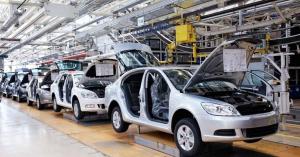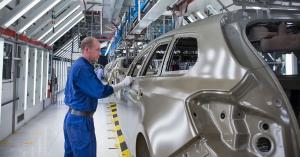India's Ancillary Revolution The Unsung Heroes of Auto Go Global
From a 'China Plus One' alternative to a 'First Choice' global hub, the industry's $80 billion transformation is here.
KOLKATA, WEST BENGAL, INDIA, October 17, 2025 /EINPresswire.com/ -- For decades, they were the "behind-the-scenes" heroes. The nuts, bolts, pistons, and wiring harnesses. The thousands of components that make a vehicle roar to life. But in 2025, India's auto ancillary industry is tired of being backstage. It's stepping into the global spotlight, and the world is paying attention.
What was once a supporting act for the massive Indian automotive industry has transformed into a global powerhouse in its own right. The numbers for the just-concluded fiscal year (FY25) tell a staggering story: the industry clocked a turnover of over $80 billion (Rs. 6.73 lakh crore), marking a robust 9.6% growth.
To put that in perspective, the sector has nearly doubled in size in just the last five years.
"We're not just suppliers anymore; we're partners in innovation," said a senior executive from a major component manufacturer based in Pune. "Global carmakers aren't just coming to India for cost savings. They're coming for quality, for technology, and for reliable R&D."
The Export Engine Roars
The clearest sign of this shift is on the global trade front. For the first time, the industry is flexing its muscles with a significant trade surplus of $453 million. We're officially exporting more of these high-tech components than we import.
Exports surged 8% to hit $22.9 billion this past year. While North America remains the biggest customer, the real buzz is around Asia, where exports shot up by over 15%. From sophisticated engine parts to intricate electronics, 'Made in India' components are now standard in cars rolling off assembly lines in Europe, the U.S., and Japan.
This isn't happening in a vacuum. The global "China Plus One" strategy—where international companies are desperately seeking to diversify their supply chains—has found a perfect answer in India.
"We have the engineering talent, the scale, and now, the policy to back it up," comments an industry analyst. "The government's Production-Linked Incentive (PLI) scheme has been a game-changer, injecting billions into capacity building and, crucially, into localizing EV components."
Not Just Parts, But the Future
Ah, EVs. The electric revolution is where the ancillary industry is truly shedding its old skin.
With India's own EV market exploding, local suppliers are in a race to build the "brains and heart" of these new-age vehicles. We're talking advanced battery management systems, electric motors, and sophisticated digital cockpits.
Foreign giants are taking note. Just this month, French mobility giant OP Mobility announced a massive $200-300 million investment to expand its factories and R&D hubs in India, betting big on the country as a future-tech base.
This pivot is visible on the factory floor. Companies that once mastered precision-engineered gearbox parts are now retooling to produce lightweight alloys and complex electronics for advanced driver-assistance systems (ADAS).
Of course, the road isn't without its bumps. Recent export curbs from China on rare earth materials—critical for EV motors—have sent a ripple of concern through the industry. But this has only doubled down the resolve for "Atmanirbhar" (self-reliance), pushing R&D in finding alternative materials and technologies.
The supporting act has officially taken center stage. As the global automotive industry grapples with its biggest transformation in a century, it's looking to India not just as a factory, but as a forge for the future. And for the first time, the spotlight feels just right.
Sujoy Biswas
RPM Time
support@rpmtime.com
Visit us on social media:
X
Other
Legal Disclaimer:
EIN Presswire provides this news content "as is" without warranty of any kind. We do not accept any responsibility or liability for the accuracy, content, images, videos, licenses, completeness, legality, or reliability of the information contained in this article. If you have any complaints or copyright issues related to this article, kindly contact the author above.


